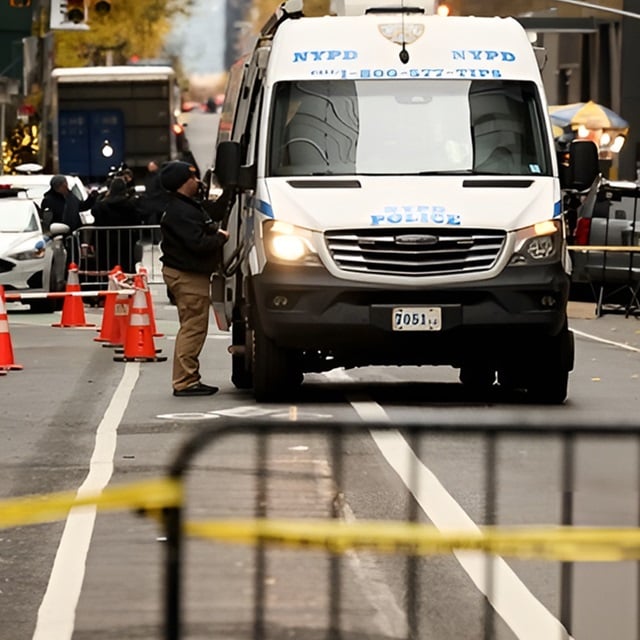IP: 5 more safeguards for patent owners under the America Invents Act
Congress has built several safeguards for patent owners into the AIA that can raise to fend off a post-grant proceeding.
December 03, 2013 at 03:00 AM
10 minute read
The original version of this story was published on Law.com
When creating the new post-grant proceedings (post grant review, inter partes review and covered business method review) under the Leahy-Smith America Invents Act (AIA), Congress wanted to provide a viable means of challenging bad patents that still protected patent owners from frivolous harassment. As a result, Congress built several safeguards for patent owners into the AIA. A previous post discussed one of these safeguards, the AIA estoppels. There are several other important defenses, however, that a patent owner can raise to fend off a post-grant proceeding.
Amended claims
Perhaps the most significant protection the AIA affords to patent owners is the ability to amend claims. Under the AIA, a patent owner has one opportunity to amend its claims for a patent under review. This can place patent challengers at a significant disadvantage, as they must try to predict how the owner might amend claims to strengthen the patent. As a result, patent challengers not only run the risk of the Patent Trial and Review Board (PTAB) determining that a challenged claim is valid, but may also face an overall stronger patent. This is because the amended claims not only can overcome the invalidity challenge, but also the amended claims may be better able to cover the infringing challenger's products in the parallel civil action. Because of the estoppels, it may then be difficult to subsequently challenge an amended patent that survives a post-grant proceeding. This risk alone provides significant assurance that patent owners will not face harassment from challengers.
Not a new argument
Another important patent owner safeguard is that when determining to institute a post-grant proceeding, the USPTO Director will take into consideration whether the patent challenger's arguments and/or prior art have already been considered by the USPTO during examination. This applies to both inter partes reviews and post-grant reviews and allows the director to deny a petition if the petitioner is raising the same arguments and prior art as during the examination.
Filing bars
Another safeguard for patent owners is provided by a petition filing time limit that bars an inter partes review from being “instituted if the petition requesting the proceeding is filed more than 1 year after the date on which the petitioner, real party in interest, or privy of the petition is served with a complaint alleging infringement of the patent.” This safeguard was put in place in direct response to concerns voiced by patent owners who already faced abuse from infringers using civil litigation discovery during reexaminations. The one-year time limit makes it unlikely that a civil court case will have progressed to the discovery phase of litigation, preventing a challenger from using this tactic during inter partes review.
Similarly, the AIA bars patent challengers from petitioning for a post-grant proceeding and later pursuing a declaratory judgment action. For inter partes reviews and post-grant review, a petition is barred if the patent challenger or the patent challenger's real parties in interest has previously filed a declaratory judgment action. This ensures that the patent owner will not have to defend simultaneously against an invalidity challenge in court and at the USPTO.
Settlement
The AIA provides parties in a post-grant review proceeding an opportunity to settle their dispute, something that is not available through reexamination. The AIA statute sets forth that a post-grant review proceeding “shall terminate with respect to any petitioner upon the joint request of the petitioner and the patent owner, unless the Office has decided the merits of the proceeding before the request or termination is filed.” By allowing settlement, the patent owner has an opportunity to dispose of the dispute quickly and removes the risks of having the patent claims cancelled in the post-grant proceeding.
Patent Trial and Review Board
Finally, an important safeguard for patent owners provided by the AIA is that post-grant proceedings are heard by the PTAB, a highly competent panel of administrative patent judges. Patent challengers face detailed scrutiny from the PTAB, with a high burden to meet for a decision of invalidity. In these proceedings, proper claim interpretation and relevant facts are tantamount. Patent challengers must show how each claim element should be interpreted, how each claim element reads on the prior art, and how a person of ordinary skill in the art would have reasons to combine the prior art elements. The PTAB only considers whether or not the challenger has met that burden, and nothing else.
Conclusion
While the AIA post-grant proceedings do provide a more efficient and cost-effective means for challenging bad patents, they also protect patent owners from undue harassment. In drafting the AIA, Congress attempted to strike a balance that favors improving the quality of patents issued by the USPTO, thereby strengthening the U.S. patent system, and at the same time protecting property rights of patent owners.
This is for general information and is not intended to be and should not be taken as legal advice for any particular matter. It is not intended to and does not create any attorney-client relationship. The opinions expressed and any legal positions asserted in the article are those of the author and do not necessarily reflect the opinions or positions of Miles & Stockbridge P.C., its other lawyers, or InsideCounsel.
When creating the new post-grant proceedings (post grant review, inter partes review and covered business method review) under the Leahy-Smith America Invents Act (AIA), Congress wanted to provide a viable means of challenging bad patents that still protected patent owners from frivolous harassment. As a result, Congress built several safeguards for patent owners into the AIA. A previous post discussed one of these safeguards, the AIA estoppels. There are several other important defenses, however, that a patent owner can raise to fend off a post-grant proceeding.
Amended claims
Perhaps the most significant protection the AIA affords to patent owners is the ability to amend claims. Under the AIA, a patent owner has one opportunity to amend its claims for a patent under review. This can place patent challengers at a significant disadvantage, as they must try to predict how the owner might amend claims to strengthen the patent. As a result, patent challengers not only run the risk of the Patent Trial and Review Board (PTAB) determining that a challenged claim is valid, but may also face an overall stronger patent. This is because the amended claims not only can overcome the invalidity challenge, but also the amended claims may be better able to cover the infringing challenger's products in the parallel civil action. Because of the estoppels, it may then be difficult to subsequently challenge an amended patent that survives a post-grant proceeding. This risk alone provides significant assurance that patent owners will not face harassment from challengers.
Not a new argument
Another important patent owner safeguard is that when determining to institute a post-grant proceeding, the USPTO Director will take into consideration whether the patent challenger's arguments and/or prior art have already been considered by the USPTO during examination. This applies to both inter partes reviews and post-grant reviews and allows the director to deny a petition if the petitioner is raising the same arguments and prior art as during the examination.
Filing bars
Another safeguard for patent owners is provided by a petition filing time limit that bars an inter partes review from being “instituted if the petition requesting the proceeding is filed more than 1 year after the date on which the petitioner, real party in interest, or privy of the petition is served with a complaint alleging infringement of the patent.” This safeguard was put in place in direct response to concerns voiced by patent owners who already faced abuse from infringers using civil litigation discovery during reexaminations. The one-year time limit makes it unlikely that a civil court case will have progressed to the discovery phase of litigation, preventing a challenger from using this tactic during inter partes review.
Similarly, the AIA bars patent challengers from petitioning for a post-grant proceeding and later pursuing a declaratory judgment action. For inter partes reviews and post-grant review, a petition is barred if the patent challenger or the patent challenger's real parties in interest has previously filed a declaratory judgment action. This ensures that the patent owner will not have to defend simultaneously against an invalidity challenge in court and at the USPTO.
Settlement
The AIA provides parties in a post-grant review proceeding an opportunity to settle their dispute, something that is not available through reexamination. The AIA statute sets forth that a post-grant review proceeding “shall terminate with respect to any petitioner upon the joint request of the petitioner and the patent owner, unless the Office has decided the merits of the proceeding before the request or termination is filed.” By allowing settlement, the patent owner has an opportunity to dispose of the dispute quickly and removes the risks of having the patent claims cancelled in the post-grant proceeding.
Patent Trial and Review Board
Finally, an important safeguard for patent owners provided by the AIA is that post-grant proceedings are heard by the PTAB, a highly competent panel of administrative patent judges. Patent challengers face detailed scrutiny from the PTAB, with a high burden to meet for a decision of invalidity. In these proceedings, proper claim interpretation and relevant facts are tantamount. Patent challengers must show how each claim element should be interpreted, how each claim element reads on the prior art, and how a person of ordinary skill in the art would have reasons to combine the prior art elements. The PTAB only considers whether or not the challenger has met that burden, and nothing else.
Conclusion
While the AIA post-grant proceedings do provide a more efficient and cost-effective means for challenging bad patents, they also protect patent owners from undue harassment. In drafting the AIA, Congress attempted to strike a balance that favors improving the quality of patents issued by the USPTO, thereby strengthening the U.S. patent system, and at the same time protecting property rights of patent owners.
This is for general information and is not intended to be and should not be taken as legal advice for any particular matter. It is not intended to and does not create any attorney-client relationship. The opinions expressed and any legal positions asserted in the article are those of the author and do not necessarily reflect the opinions or positions of
This content has been archived. It is available through our partners, LexisNexis® and Bloomberg Law.
To view this content, please continue to their sites.
Not a Lexis Subscriber?
Subscribe Now
Not a Bloomberg Law Subscriber?
Subscribe Now
NOT FOR REPRINT
© 2025 ALM Global, LLC, All Rights Reserved. Request academic re-use from www.copyright.com. All other uses, submit a request to [email protected]. For more information visit Asset & Logo Licensing.
You Might Like
View All


Inside Track: Cooley's Modest Proposal to Make Executives Safer

Trending Stories
- 1Munger, Gibson Dunn Billed $63 Million to Snap in 2024
- 2January Petitions Press High Court on Guns, Birth Certificate Sex Classifications
- 3'A Waste of Your Time': Practice Tips From Judges in the Oakland Federal Courthouse
- 4Judge Extends Tom Girardi's Time in Prison Medical Facility to Feb. 20
- 5Supreme Court Denies Trump's Request to Pause Pending Environmental Cases
Who Got The Work
J. Brugh Lower of Gibbons has entered an appearance for industrial equipment supplier Devco Corporation in a pending trademark infringement lawsuit. The suit, accusing the defendant of selling knock-off Graco products, was filed Dec. 18 in New Jersey District Court by Rivkin Radler on behalf of Graco Inc. and Graco Minnesota. The case, assigned to U.S. District Judge Zahid N. Quraishi, is 3:24-cv-11294, Graco Inc. et al v. Devco Corporation.
Who Got The Work
Rebecca Maller-Stein and Kent A. Yalowitz of Arnold & Porter Kaye Scholer have entered their appearances for Hanaco Venture Capital and its executives, Lior Prosor and David Frankel, in a pending securities lawsuit. The action, filed on Dec. 24 in New York Southern District Court by Zell, Aron & Co. on behalf of Goldeneye Advisors, accuses the defendants of negligently and fraudulently managing the plaintiff's $1 million investment. The case, assigned to U.S. District Judge Vernon S. Broderick, is 1:24-cv-09918, Goldeneye Advisors, LLC v. Hanaco Venture Capital, Ltd. et al.
Who Got The Work
Attorneys from A&O Shearman has stepped in as defense counsel for Toronto-Dominion Bank and other defendants in a pending securities class action. The suit, filed Dec. 11 in New York Southern District Court by Bleichmar Fonti & Auld, accuses the defendants of concealing the bank's 'pervasive' deficiencies in regards to its compliance with the Bank Secrecy Act and the quality of its anti-money laundering controls. The case, assigned to U.S. District Judge Arun Subramanian, is 1:24-cv-09445, Gonzalez v. The Toronto-Dominion Bank et al.
Who Got The Work
Crown Castle International, a Pennsylvania company providing shared communications infrastructure, has turned to Luke D. Wolf of Gordon Rees Scully Mansukhani to fend off a pending breach-of-contract lawsuit. The court action, filed Nov. 25 in Michigan Eastern District Court by Hooper Hathaway PC on behalf of The Town Residences LLC, accuses Crown Castle of failing to transfer approximately $30,000 in utility payments from T-Mobile in breach of a roof-top lease and assignment agreement. The case, assigned to U.S. District Judge Susan K. Declercq, is 2:24-cv-13131, The Town Residences LLC v. T-Mobile US, Inc. et al.
Who Got The Work
Wilfred P. Coronato and Daniel M. Schwartz of McCarter & English have stepped in as defense counsel to Electrolux Home Products Inc. in a pending product liability lawsuit. The court action, filed Nov. 26 in New York Eastern District Court by Poulos Lopiccolo PC and Nagel Rice LLP on behalf of David Stern, alleges that the defendant's refrigerators’ drawers and shelving repeatedly break and fall apart within months after purchase. The case, assigned to U.S. District Judge Joan M. Azrack, is 2:24-cv-08204, Stern v. Electrolux Home Products, Inc.
Featured Firms
Law Offices of Gary Martin Hays & Associates, P.C.
(470) 294-1674
Law Offices of Mark E. Salomone
(857) 444-6468
Smith & Hassler
(713) 739-1250






